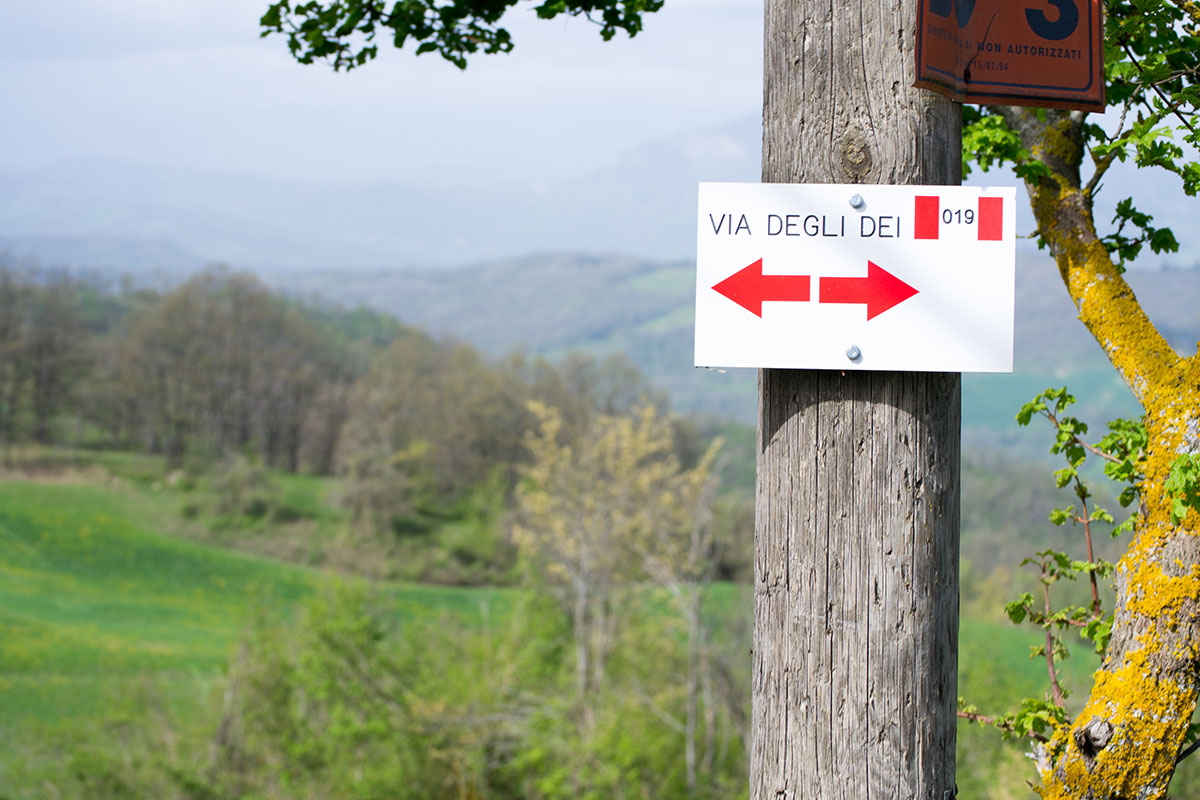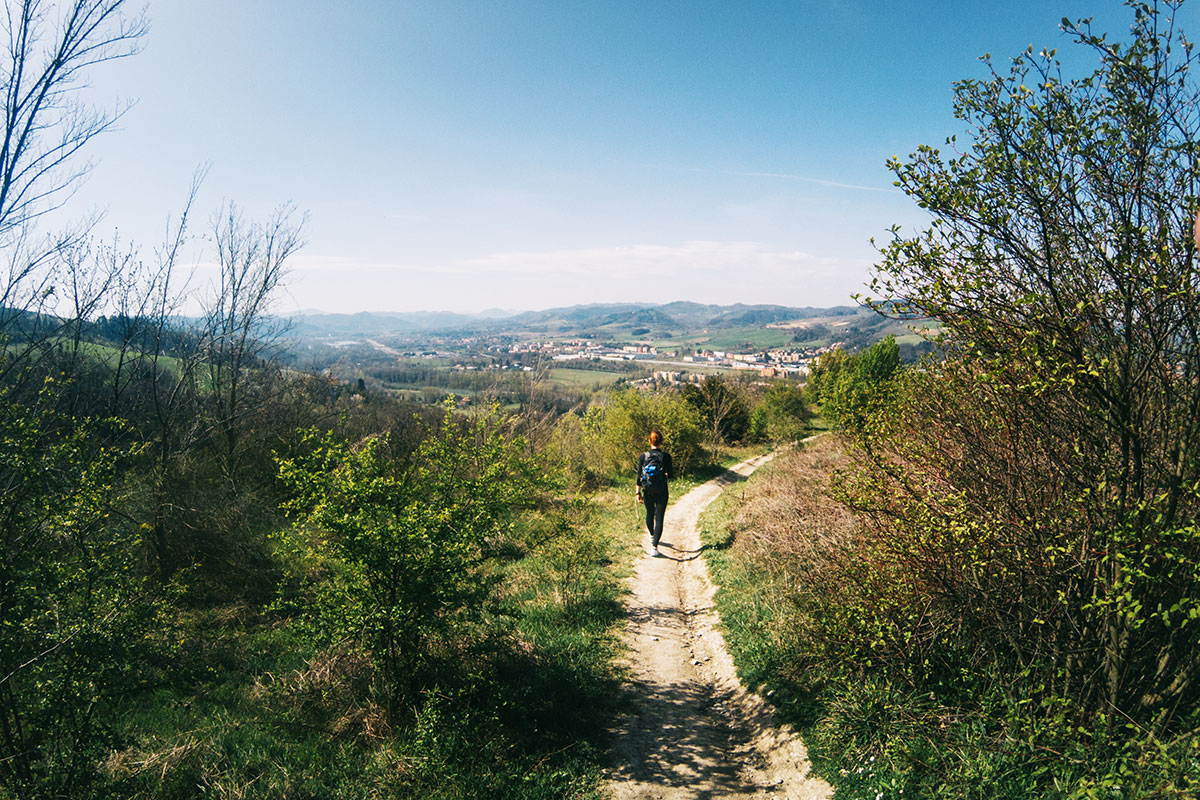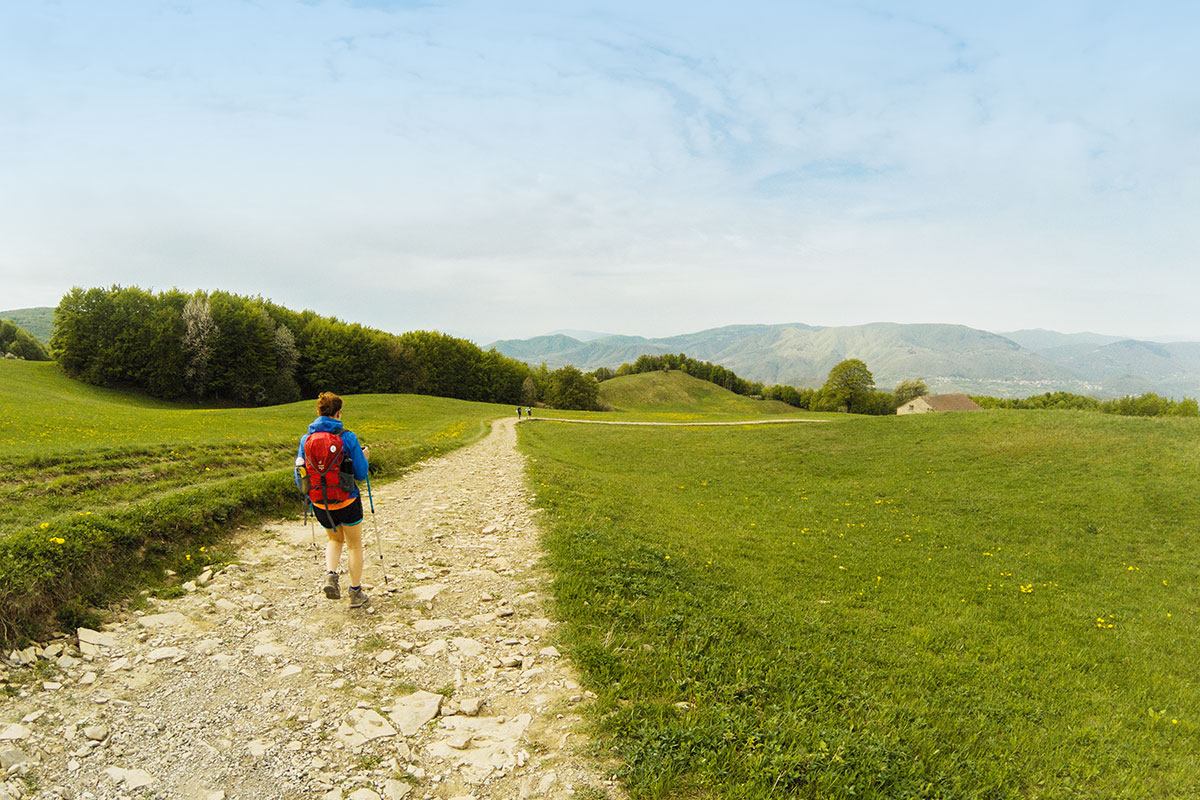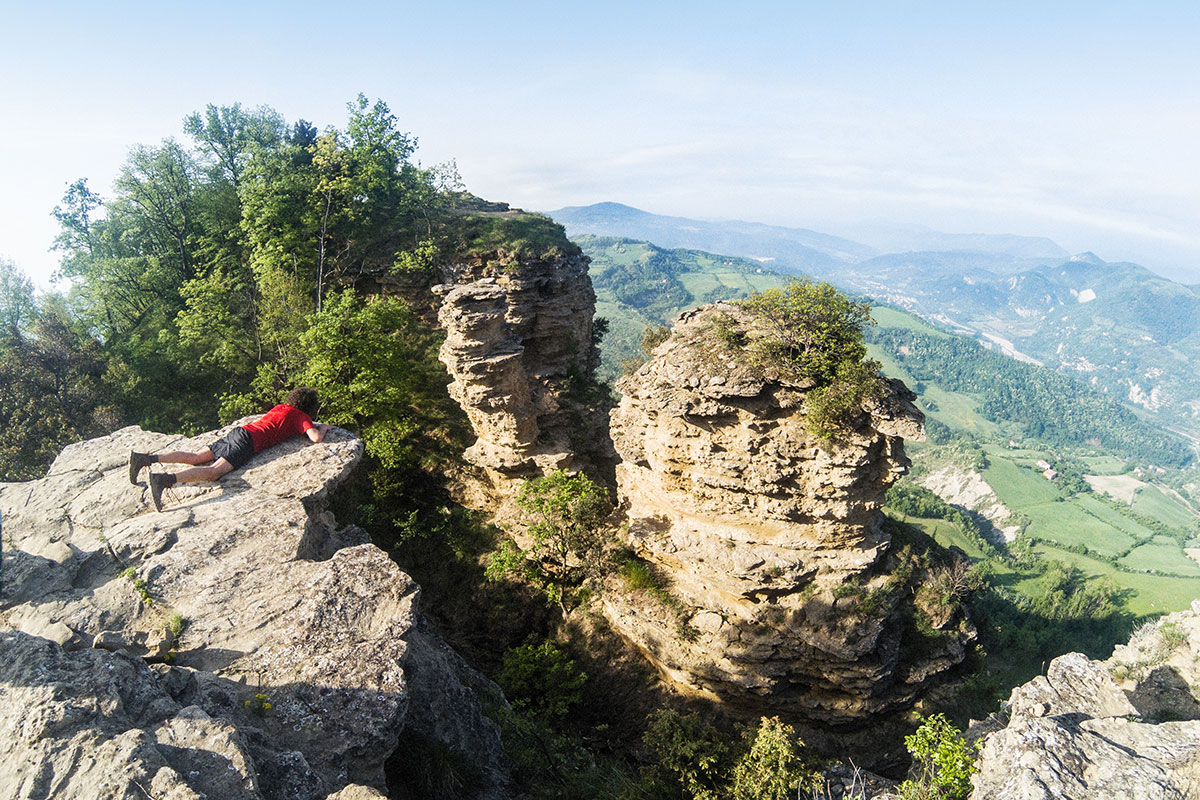The Via degli Dei, a journey in search of yourself
The Villa dei Bosconi Itineraries
The Via degli Dei is a nationally and internationally famous hiking route, so much so that some people compare it to the Camino de Santiago de Compostela. It is not, however, as difficult as the Spanish route, but it does require a lot of walking.
Recommended itinerary
- Bologna
- Badolo
- Madonna dei Fornelli
- Passo dell’Osteria Bruciata
- San Piero a Sieve
- Bivigliano
- Fiesole
- Firenze
History of the Via degli Dei
Bologna-Florence. 130 km, along mule tracks, paths and extremely steep roads, while crossing the pass between the Tuscan-Emilian Apennines and visiting historical sites and abbeys almost abandoned by civilisation.
This is the renowned route of the Via degli Dei. A trekking circuit, also beautiful to do by mountain bike, which probably takes its name from the place names involved in the journey, for example Mount Venus, Mount Adonis and Mount Luario, which refers to the goddess Lua.
A route used in the Middle Ages to travel between the two major cities of central Italy, but it is very likely that it was a road crossed as early as Roman times (it is believed to be an ancient military road called Flaminia minor, not to be confused with the more famous Flaminia Militare), the Via degli Dei took on new notoriety in the 1990s, when it became one of the most popular trekking routes among the community of enthusiasts.
How many days to walk the Via degli Dei
The route starts in Bologna, in Piazza Maggiore. From the Piazza Medicea, generally in the early afternoon, the route climbs to the church of San Luca, on the Colle della Guardia. The first day generally ends in the meadows of Mugnano, where you can rest from the efforts of the first day.
The second day generally follows a series of meadows and relaxing landscapes leading to Monte Adone, passing Badolo and the Contrafforte Pliocenico Nature Reserve. The walk here becomes very demanding because, although the descent to Monzuno via Brento is fairly tarmac, the route is still arduous and tiring. The second day should end, if the programme is adhered to, in the vicinity of Madonna dei Fornelli.
The third stage is tough but less tiring than the first two, and also the most rewarding to see and ride. We are about to take wilder paths, with beech woods, pine forests and whole fields to cheer us up, although the steep climbs that punctuate the route still make it stand out. The views are rewarding and the journey up to the Osteria Bruciata Pass, the ideal final stage of the third day, is certainly enjoyable.
The fourth stage takes us from Emilia-Romagna to Tuscany, and leads to San Piero a Sieve. The day’s route is quite uphill, with the daily height difference being one of the sharpest of the entire route, rising from 200m above sea level at San Piero a Sieve to 600m at the entrance to Bivigliano. The climbs will be fairly gentle to tackle, however, partly because by now you will presumably be used to these exertions at this point in the walk.
The fifth and final stage leads from Bivigliano to the monastery of Monte Senario, a stupendous sanctuary from which you can see the entire Arno valley. The last stages of the journey are Pratone, a marvellous jagged wood of pines and holm oaks, which is also the last climb of the journey, and Fiesole.
The route passes right in front of the hotel, which is all the more reason to stop and relax with a refreshing dip in the pool.
From here, of course, you can go on to Florence, on the tarmac road that leads to the capital of the lily, or you can stop and rest with us at Villa dei Bosconi!





